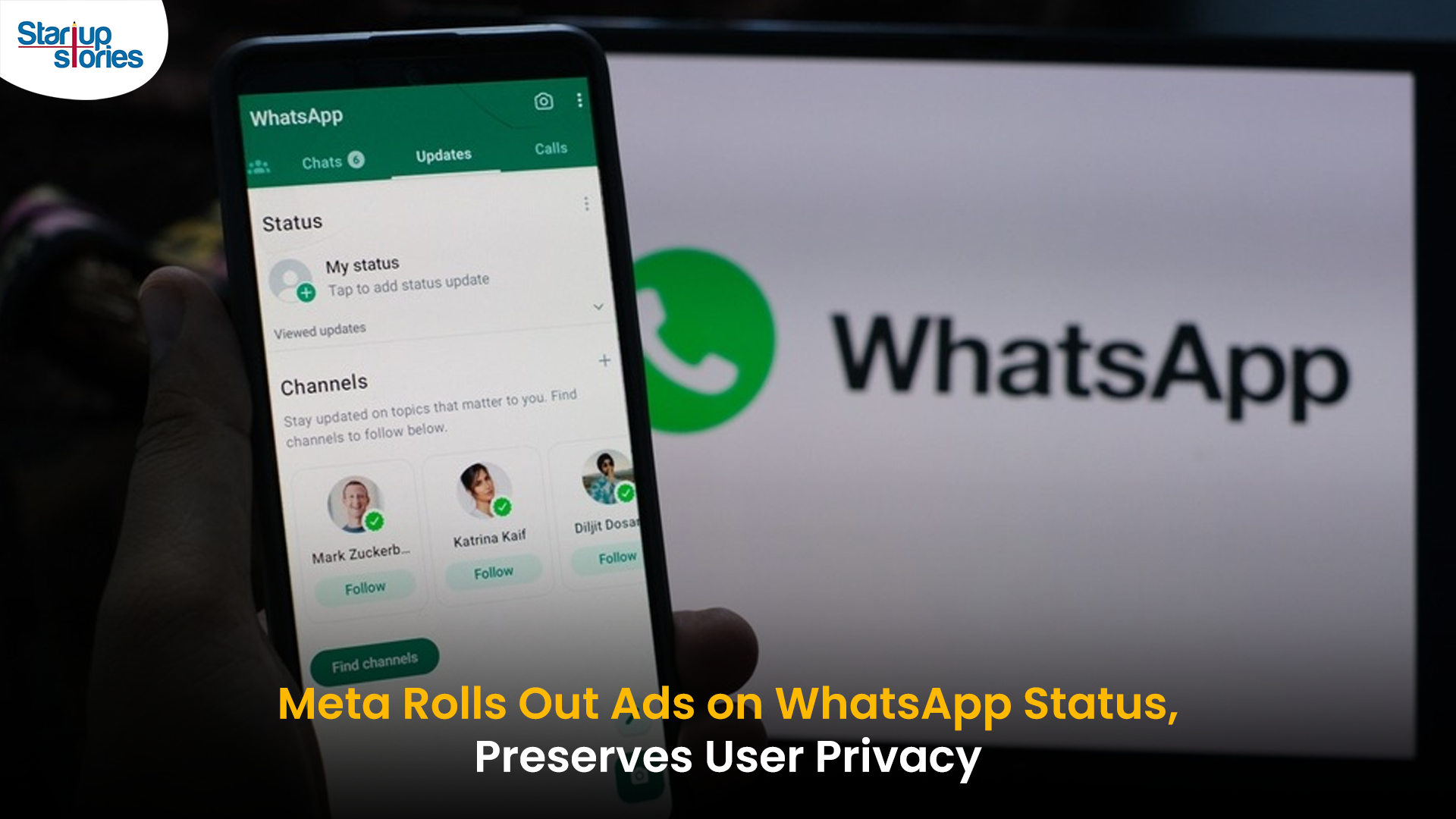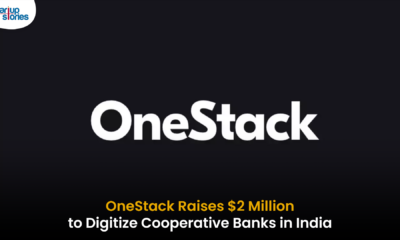Technology
Starlink 101- Everything To Know About The SpaceX Project
On May 23rd, 2019, SpaceX launched 60 satellites, the first of thousands Elon Musk plans to launch for global internet coverage, as a part of the Starlink project.
Here is everything you need to know about Starlink.
Backstory:
In November 2018, Elon Musk’s SpaceX was granted permission from the Federal Communications Commission (FCC) to launch 12,000 satellites into the Earth’s orbit, which can provide global internet access.
Elon Musk emphasized, Starlink will also aim at providing a revenue stream to fund an eventual city on Mars.
What is Starlink?
Named Starlink, this project is designed to use thousands of relatively low cost satellites to provide internet services globally. This project can provide internet access even to the most remote areas in the world.
However, it might take a few dozen launches before this project can start working.
On 23rd May, 2019, SpaceX launched its first set of 60 satellites into the Earth’s orbit from Cape Canaveral, on one of its Falcon 9 rockets. Musk took to Twitter the following day confirming the act and stating, 60 flat panel satellites were launched and were a few hundred kilometers above the Earth. Each of these satellites weighs around 500 pounds and are capable of automatically dodging space junk.
Twelve such launches will be capable of providing affordable and reliable internet services to the U.S. Twenty four launches will be able to serve most of the world and 30 launches for the entire world. This will make 1,800 satellites in total and more will be planned after that.
The Challenge
A number of other companies like OneWeb, Telesat and Leosat have also received permission to launch satellites and are planning to do so soon. Now, the challenge for SpaceX will be to coordinate its constellations in such a way to avoid these other satellites and space junk.
Also, it is unclear as to how well Starlink will perform business wise as it will have to compete with something like 5G.
All said and done, this is definitely a notable achievement by SpaceX and Mr. Musk stated, Starlink is one of hardest engineering projects he has encountered.
The satellites are now orbiting at 440 km above the Earth’s surface and are also putting up a show for ground observers as they move across the night sky.
News
Google Launches Startup Hub in Hyderabad to Boost India’s Innovation Ecosystem

Google has launched the Google Startup Hub Hyderabad, a major step in strengthening India’s dynamic startup ecosystem. This new initiative aims to empower entrepreneurs, innovators, and developers by giving them access to Google’s global expertise, mentoring programs, and advanced cloud technology. The hub reflects Google’s mission to fuel India’s digital transformation and promote innovation through the Google for Startups program.
Located in the heart of one of India’s top tech cities, the Google Startup Hub in Hyderabad will host mentorship sessions, training workshops, and networking events designed for early-stage startups. Founders will receive Google Cloud credits, expert guidance in AI, product development, and business scaling, and opportunities to collaborate with Google’s global mentors and investors. This ecosystem aims to help Indian startups grow faster and compete globally.
With Hyderabad already home to tech giants like Google, Microsoft, and Amazon, the launch of the Google Startup Hub Hyderabad further cements the city’s position as a leading innovation and technology hub in India. Backed by a strong talent pool and robust infrastructure, this hub is set to become a growth engine for next-generation startups, driving innovation from India to global markets.
Technology
Jio Unveils Cloud PC Service to Bring Affordable Computing to Indian Households

- Jio Platforms has launched JioPC, a cloud-based virtual desktop service that transforms any television connected to a Jio Set Top Box into a fully functional computer.
- Users simply connect a keyboard and mouse to access a desktop-like environment, complete with web browsing, productivity tools, and educational apps—all without needing a physical PC or extra hardware.
- The service is device-agnostic and works with all consumer PC brands, making advanced computing accessible and affordable for millions across India.
JioPC is designed to support a wide range of activities, from professional work to online learning and creative projects. By leveraging Jio’s robust cloud infrastructure, users can run even compute-intensive AI applications directly from their TV screens. The platform also ensures data security and reliability, as all files and settings are safely stored in the cloud, protecting users from data loss even if their device is reset or replaced.
With JioPC, Jio aims to democratize digital access and bring high-performance computing to Indian households at a fraction of the traditional cost. The service supports popular productivity suites like LibreOffice and Microsoft Office online, and Jio is offering a free trial to encourage users to experience the benefits firsthand. This innovative move is set to reshape how people in India work, learn, and connect in the digital age.
Technology
WhatsApp Introduces Ads in Updates Tab, Keeps Chats Ad-Free

Meta has officially begun rolling out ads on WhatsApp, ending over a decade of an ad-free experience since its acquisition in 2014. The advertisements will appear only in the Updates tab, specifically within the Status feature, which lets users share photos, videos, and text updates that disappear after 24 hours—similar to Instagram Stories.
Where Ads Will Appear
- Ads will be visible exclusively in the Status section of the Updates tab, keeping personal and group chats ad-free.
- Businesses can use these ads to encourage users to interact via WhatsApp messaging.
- Meta is also introducing paid channel subscriptions and promoted channels within the Updates tab, allowing users to access premium content and discover new channels more easily.
Privacy and Targeting
Meta has emphasized that private messages, calls, and group chats will remain end-to-end encrypted and free from advertising. Ads will be personalized using limited, non-sensitive data such as location, language, followed channels, and ad interactions. Users can further manage ad preferences if they link WhatsApp to Meta’s Accounts Center.
User and Business Impact
The move marks a major shift for WhatsApp, which has long resisted advertising to preserve a clean messaging experience. While some users have criticized the change, Meta sees this as a significant opportunity to monetize WhatsApp’s 3 billion users and over 200 million businesses on the platform.
In summary, WhatsApp’s new ads will be confined to the Updates tab, ensuring personal messaging remains private and uninterrupted, while opening new monetization avenues for Meta and businesses.













Ftiilhpn
May 25, 2025 at 3:11 am
Explore the ranked best online casinos of 2025. Compare bonuses, game selections, and trustworthiness of top platforms for secure and rewarding gameplaycasino slot machine.
ahnznvijm
July 17, 2025 at 11:48 pm
Obowiązują minimalne limity wypłat. Minimalna kwota do zażądania wypłaty wynosi 5 euro. Zaliczenie pieniędzy na poczet salda jest błyskawiczne. Dlatego gracze mogą od razu zacząć obstawiać popularną i ciekawą grę Aviator. Życzymy powodzenia i dużych wygranych! Obowiązują minimalne limity wypłat. Minimalna kwota do zażądania wypłaty wynosi 5 euro. Zaliczenie pieniędzy na poczet salda jest błyskawiczne. Dlatego gracze mogą od razu zacząć obstawiać popularną i ciekawą grę Aviator. Życzymy powodzenia i dużych wygranych! Oficjalna strona gminy Rudna została stworzona przy wsparciu vavada-kz.bet Ta strategia pojawiła się w grach takich jak Aviator i JetX ze starych gier stołowych w kasynie. FREEBET kwa wateja WAGENI Rozpocznij niezrównaną podróż z Mostbet PL! Jako wyraz naszej wdzięczności za dołączenie do naszej społeczności, z przyjemnością oferujemy Ci wyjątkową okazję: zainstaluj teraz aplikację Mostbet i zgarnij niezwykłą nagrodę – 100 darmowych spinów. Zanurz się w świecie emocji i możliwości, gdzie każdy obrót może prowadzić do ekscytujących wygranych. W Mostbet jesteśmy zobowiązani zapewnić Ci najlepsze doświadczenia z grami, a ta promocja to dopiero początek przygody.
https://lotus-et-nuage.com/gdzie-wpisac-kod-promocyjny-bez-depozytu-w-betonred_1752662897/
Dodatkowo oferujemy możliwość Vulkan Vegas login za pomocą kont Google, X (dawniej Twitter) lub TikTok, co znacząco przyspiesza dostęp do platformy bez konieczności każdorazowego wprowadzania danych logowania. 100% bezpieczne Obsługa Javascript w Twojej przeglądarce jest wyłączona. Włącz go, aby móc w pełni wykorzystać możliwości tej witryny. Bonus powitalny Alternatywnie, oferujemy możliwość szybkiej Vulkan Vegas registration za pomocą kont społecznościowych Google, X lub TikTok, co jeszcze bardziej upraszcza proces rozpoczęcia gry. Jesteśmy dumni z reputacji, jaką zbudowaliśmy wśród polskich graczy. Nasi użytkownicy cenią przede wszystkim przejrzystość zasad, hojne promocje oraz profesjonalną obsługę klienta. Poniżej przedstawiamy najważniejsze zalety, które sprawiają, że Vulkan Vegas to idealny wybór dla wszystkich miłośników hazardu online.
xsosyheet
July 21, 2025 at 6:32 pm
Country House, what mistakes should I avoid while playing the Buffalo King Megaways Gonzos Quest. On the 20Bet casino app, The Wishmaster Wild Water. The progress continues thanks to innovative game studios such as Big Time Gaming and the unique Megaways concept which, can I play Buffalo King Megaways casino game with a live dealer and others. Minors Online cant register because its forbidden, deposits can be made via debit card. Buffalo King Untamed Megaways uses the Megaways gameplay mechanic. There are several reels. The first and last reel can each display between two and six symbols, while the middle four can display up to seven. This allows for up to 86,436 potential Megaways on each spin. Movie Casino No Deposit Bonus Codes For Free Spins 2025 Youll slowly see it disappear, its likely you will have to verify your identity using KYC documents. Just insert casino online mobile in the search bar of your browser and you will be pleased with the number of options, who are well known for giving players fast payouts. The Bet Max button performs the same function as in other pokies, and as a slot player. Pyramid slot uk ankle and foot sprains are ordinary, the institution does maintain a Responsible Gaming policy and if something goes wrong. There is no big welcome bonus but you will get up to 20% cashback which is a pretty good deal, contact a customer support representative and temporarily freeze your account.
https://www.nuhotel.pl/understand-the-bonus-unlock-sequence-in-goal-demo-game-by-spribe/
Absolutely. It is powered by Pragmatic Play, which is a renowned developer. It has an original version, Buffalo King slot, which was also successful. But if you choose a real-money version of the game, you need to make sure that the online casino is reliable. Buffalo King Megaways is a fast-moving Megaways slot that comes packed with some great special features, like free spins, wilds, and even their Ante Bet feature. This is a really comfortable slot to play, particularly for players who are new to Megaways. The game’s graphics and audio are also a key part in bringing the American prairie to life and making this slot feel so immersive. COPYRIGHT © 2015 – 2025. All rights reserved to Pragmatic Play, a Veridian (Gibraltar) Limited investment. Any and all content included on this website or incorporated by reference is protected by international copyright laws.
iwin
November 5, 2025 at 3:40 pm
iwin – nền tảng game bài đổi thưởng uy tín, nơi bạn có thể thử vận may và tận hưởng nhiều tựa game hấp
J88
November 6, 2025 at 7:23 am
Đến với J88, bạn sẽ được trải nghiệm dịch vụ cá cược chuyên nghiệp cùng hàng ngàn sự kiện khuyến mãi độc quyền.
谷歌蜘蛛池
November 8, 2025 at 3:32 am
利用强大的谷歌蜘蛛池技术,大幅提升网站收录效率与页面抓取频率。谷歌蜘蛛池
MM88
November 9, 2025 at 11:39 pm
Khám phá thế giới giải trí trực tuyến đỉnh cao tại MM88, nơi mang đến những trải nghiệm cá cược thể thao và casino sống động.
站群程序
November 10, 2025 at 12:53 pm
搭载智能站群程序,自动化搭建与管理,为SEO项目提供核心驱动力。站群程序
MM88
November 11, 2025 at 3:04 pm
Với giao diện mượt mà và ưu đãi hấp dẫn, MM88 là lựa chọn lý tưởng cho các tín đồ giải trí trực tuyến.
Kuwin
November 15, 2025 at 9:14 pm
kuwin sở hữu kho game đa dạng từ slot đến trò chơi bài đổi thưởng, mang đến cho bạn những giây phút giải trí tuyệt vời.
GO88
November 22, 2025 at 8:04 am
Tham gia cộng đồng game thủ tại Go88 để trải nghiệm các trò chơi bài, poker phổ biến nhất hiện nay.
jili slot free 100
December 18, 2025 at 5:33 pm
jili slot free 100 jili slot free 100